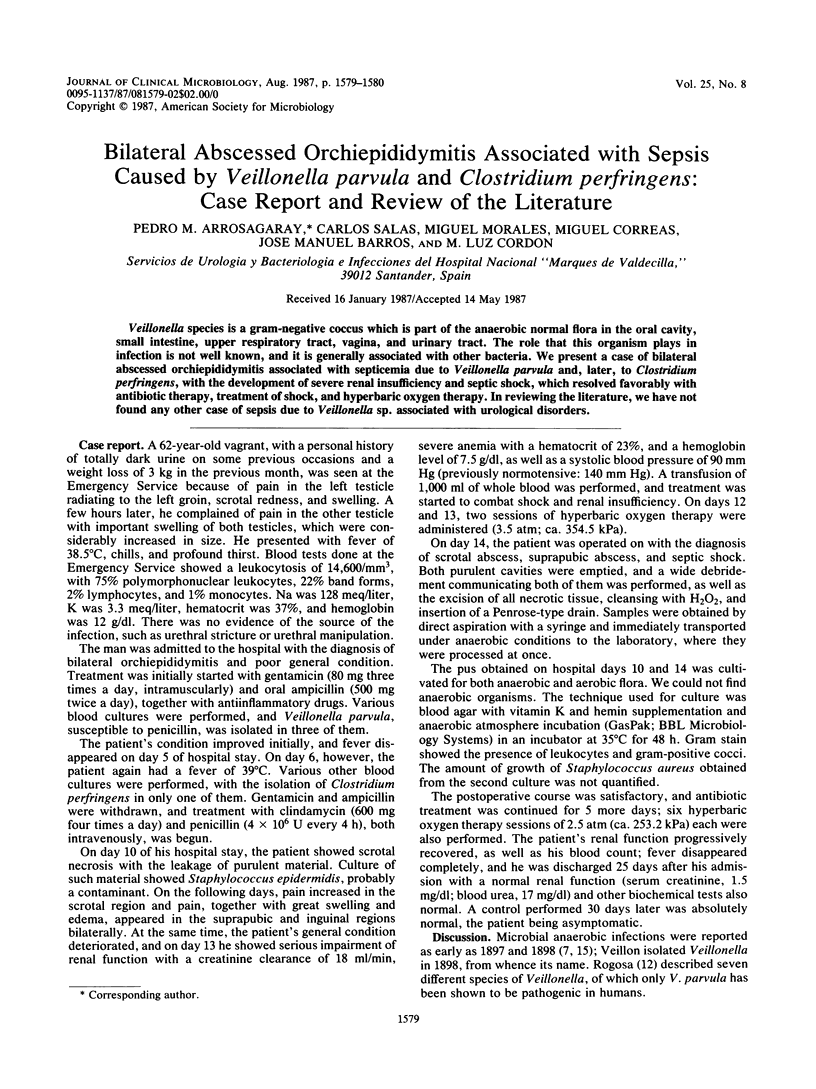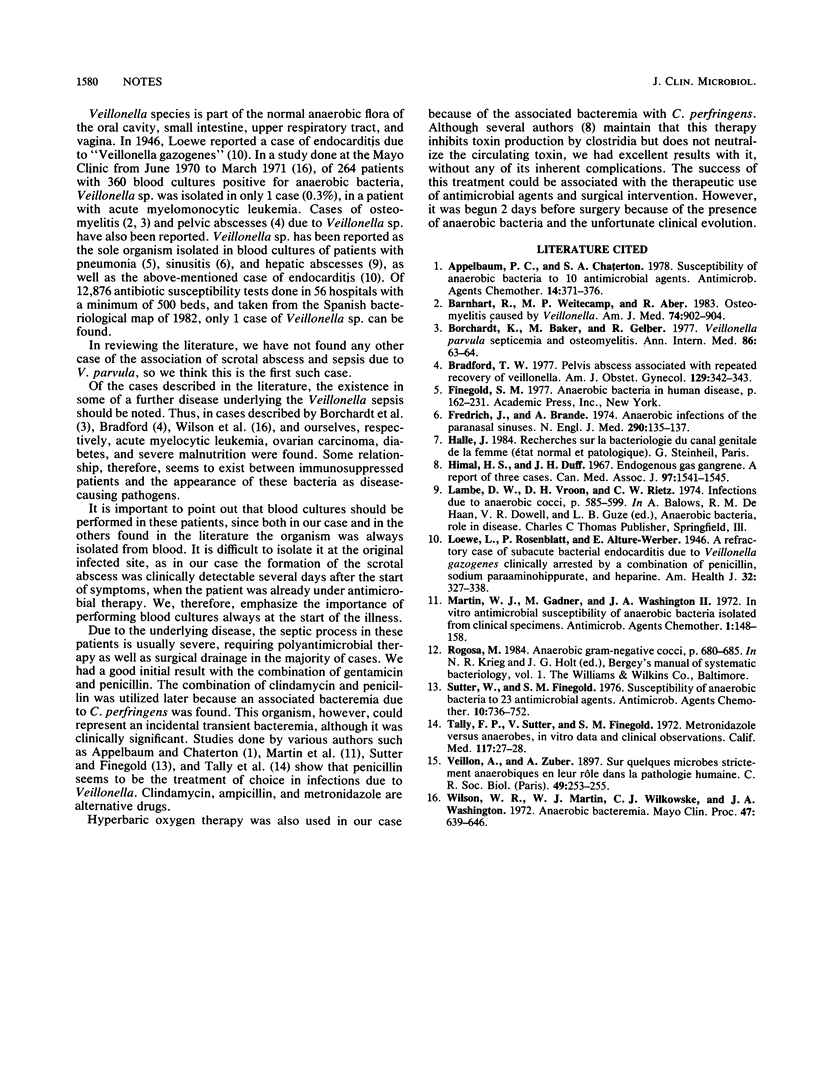Abstract
Veillonella species is a gram-negative coccus which is part of the anaerobic normal flora in the oral cavity, small intestine, upper respiratory tract, vagina, and urinary tract. The role that this organism plays in infection is not well known, and it is generally associated with other bacteria. We present a case of bilateral abscessed orchiepididymitis associated with septicemia due to Veillonella parvula and, later, to Clostridium perfringens, with the development of severe renal insufficiency and septic shock, which resolved favorably with antibiotic therapy, treatment of shock, and hyperbaric oxygen therapy. In reviewing the literature, we have not found any other case of sepsis due to Veillonella sp. associated with urological disorders.
Full text
PDF

Selected References
These references are in PubMed. This may not be the complete list of references from this article.
- Appelbaum P. C., Chatterton S. A. Susceptibility of anaerobic bacteria to ten antimicrobial agents. Antimicrob Agents Chemother. 1978 Sep;14(3):371–376. doi: 10.1128/aac.14.3.371. [DOI] [PMC free article] [PubMed] [Google Scholar]
- Barnhart R. A., Weitekamp M. R., Aber R. C. Osteomyelitis caused by Veillonella. Am J Med. 1983 May;74(5):902–904. doi: 10.1016/0002-9343(83)91083-5. [DOI] [PubMed] [Google Scholar]
- Borchardt K. A., Baker M., Gelber R. Veillonella parvula septicemia and osteomyelitis. Ann Intern Med. 1977 Jan;86(1):63–64. doi: 10.7326/0003-4819-86-1-63. [DOI] [PubMed] [Google Scholar]
- Frederick J., Braude A. I. Anaerobic infection of the paranasal sinuses. N Engl J Med. 1974 Jan 17;290(3):135–137. doi: 10.1056/NEJM197401172900304. [DOI] [PubMed] [Google Scholar]
- Himal H. S., Duff J. H. Endogenous gas gangrene: a report of three cases. Can Med Assoc J. 1967 Dec 16;97(25):1541–1543. [PMC free article] [PubMed] [Google Scholar]
- Martin W. J., Gardner M., Washington J. A., 2nd In vitro antimicrobial susceptibility of anaerobic bacteria isolated from clinical specimens. Antimicrob Agents Chemother. 1972 Feb;1(2):148–158. doi: 10.1128/aac.1.2.148. [DOI] [PMC free article] [PubMed] [Google Scholar]
- Meares E. M., Jr Current concepts in the management of carcinoma of the prostate gland. Calif Med. 1972 Dec;117(6):27–34. [PMC free article] [PubMed] [Google Scholar]
- Sutter V. L., Finegold S. M. Susceptibility of anaerobic bacteria to 23 antimicrobial agents. Antimicrob Agents Chemother. 1976 Oct;10(4):736–752. doi: 10.1128/aac.10.4.736. [DOI] [PMC free article] [PubMed] [Google Scholar]
- Williams B. T. Pelvic abscess associated with repeated recovery of veillonella. Am J Obstet Gynecol. 1977 Oct 1;129(3):342–343. doi: 10.1016/0002-9378(77)90797-9. [DOI] [PubMed] [Google Scholar]
- Wilson W. R., Martin W. J., Wilkowske C. J., Washington J. A., 2nd Anaerobic bacteremia. Mayo Clin Proc. 1972 Sep;47(9):639–646. [PubMed] [Google Scholar]


